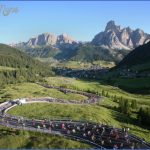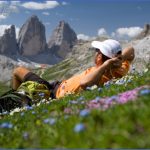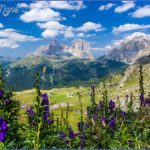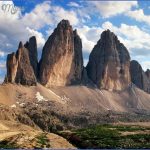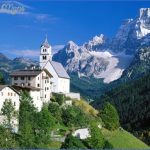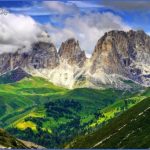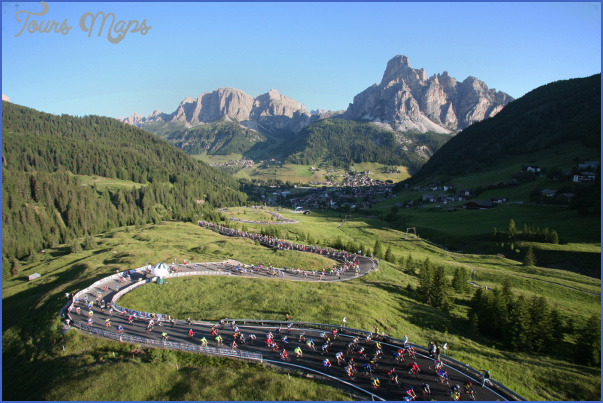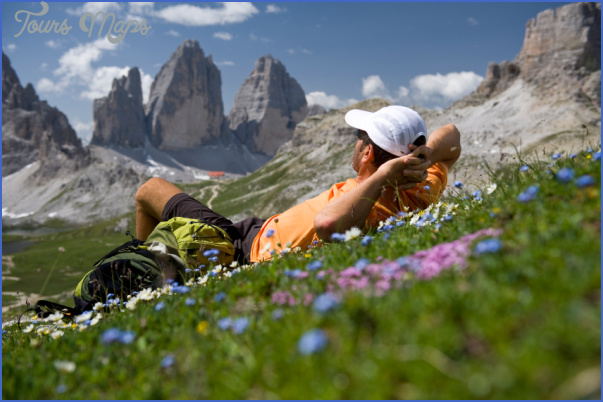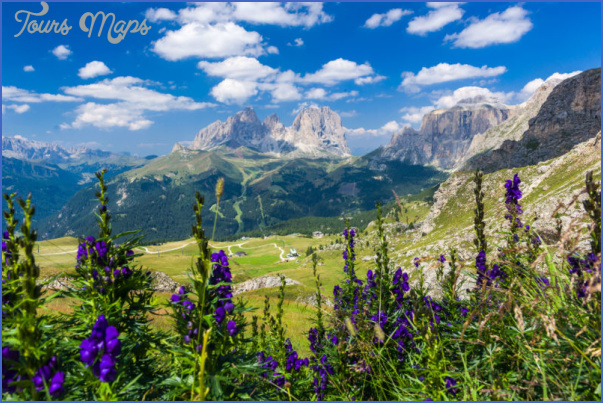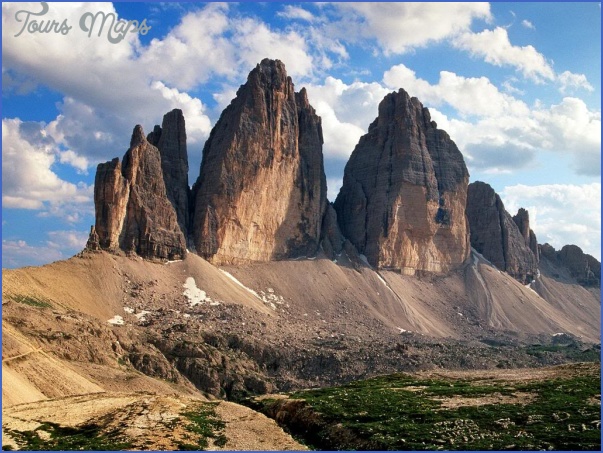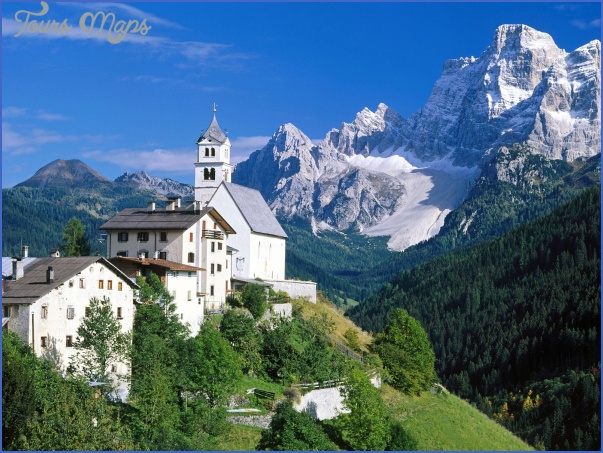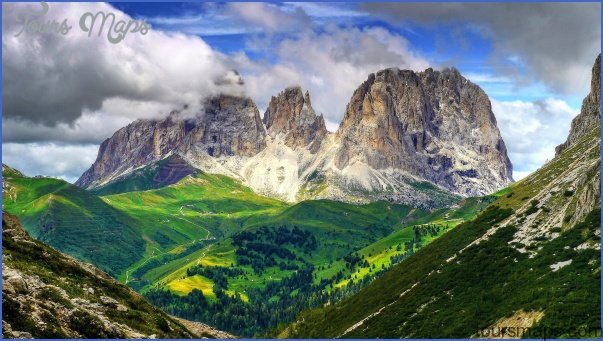THE DOLOMITES (DOLOMITI)
With their sunny skies and powdery, light snow, the Dolomites offer immensely popular downhill skiing. These amazing peaks, which Le Courbusier once called the most beautiful natural architecture in the world, are also fantastic for hiking and rock climbing.
TRENT
Between the Dolomites and the Veneto, Trent (pop. 105,000) offers an affordable sampling of northern Italian life with superb restaurants and spectacular hikes set against dramatic scenery. The Piazza del Duomo, Trent’s center and the heart of its social life, contains the city’s best sights. The Fontana del Nettuno stands, trident in hand, in the center of the piazza. Nearby is the Cattedrale di San Vigilio, named for the patron saint of Trent. (Open daily 9:30am-12:15pm and 2:30-7:30pm.) Walk down V. Belenzani and head right on V. Roma to reach the well-preserved Castello del Buonconsiglio, which has a series of frescoes depicting medieval life. (Open daily 10am-6pm. ‚5, students and seniors ‚2.50.) Monte Bondone rises majestically over Trent, making a pleasant daytrip or overnight excursion. Catch the cable car (a0461 38 10 00; every 30min. ‚0.80) to Sardagna on Mt. Bondone from V. Lung’Adige Monte Grappa, between the train tracks and the river.
Trains fa 0461 98 36 27) leave V. Dogana for: Bologna (3hr. 13 per day, ‚11); Bolzano (45min. 2 per hr. ‚3); Venice (3hr. 5 per day, ‚11); and Verona (lhr. every hr. ‚4.70). Atesina buses (0461 82 10 00) go from V. Pozzo, next to the train station, to Riva del Garda (lhr. every hr. ‚3). The tourist office, V. Manci 2, offers advice on biking, skiing, and hiking. Turn right as you exit the train station and turn left on V. Roma, which becomes V. Corsi. ( 0461 98 38 80; www.apt.trento.it. Open daily 9am-7pm.) The central and clean Hotel Venezia is at P. Duomo 45. ( fax 0461 23 41 14. Breakfast ‚5.20. Singles ‚40; doubles ‚59. MCV. ) From the station, turn right on V. Pozzo and left on V. Torre Vanga to get to Ostello Giovane Europa (HI) , V. Torre Vanga 11, a white building with new rooms and clean bathrooms. (a10461 26 34 84; fax 0461 22 25 17. Reception 7:30am-llpm. Check-out 10am. Curfew 11:30pm. Dorms ‚13; singles ‚25; doubles ‚40.) Around P. Duomo there are several cafes and a produce market. Postal Code: 38100.
THE AGE OF JANUARIUS
Dr. Luigi Garlaschelli is an organic chemist at the University of Pavia who, in his spare time, investigates the authenticity of blood relics .
LG: Can you explain the ubiquitousness of relics in Italian churches?
A: In the Middle Ages, it was believed that they would protect the city from its enemies. [Relics include] the feather of the Archangel Michael, the milk of the Virgin Mary, and the fingernails and blood of Christ.
LG: What was your first project?
A: My first work was on the blood of St. Januarius, which is contained in a small vial kept in the duomo in Naples. Januarius was beheaded in 305 AD. The relic appeared in the Middle Ages, 1000 years later. Normally blood taken from a living body will clot only once: the miracle of this blood is that it liquefies twice a year during religious ceremonies.
LG: How does that work?
A: Well, using an iron salt, which exists naturally near active volcanoes (like Vesuvius, near Naples, active at the time of the discovery of the blood), kitchen salt, and techniques available in the Middle Ages, we were able to make a substance of the same color and properties as the reputed blood of St. Januarius. The matter would be closed were we to open the vial and take a sample. But, of course, the vial is sealed.
THE DOLOMITES DOLOMITI Photo Gallery
Maybe You Like Them Too
- Explore Góra Kalwaria, Poland with this detailed map
- Explore Gumdag, Turkmenistan with this detailed map
- Explore Telfes im Stubai, Austria with this detailed map
- Explore Langenselbold, Germany with this detailed map
- Explore Krotoszyn, Poland with this detailed map

